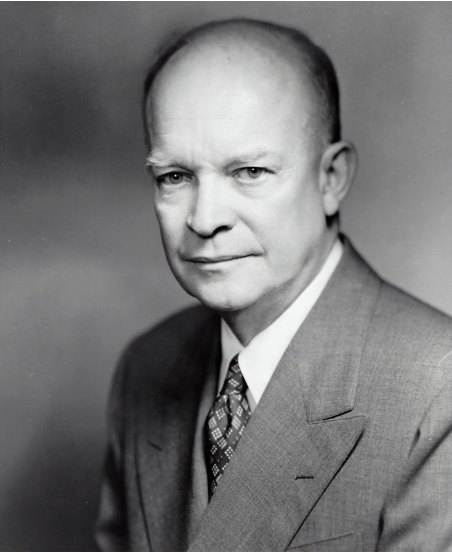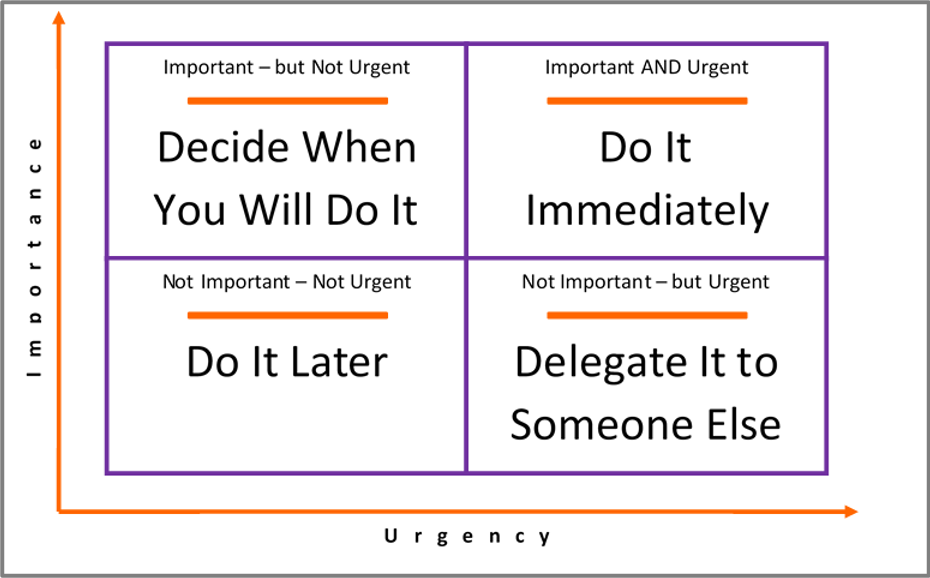In part one of this series, we looked at the “why” behind the current excitement and “buzz” around the topic of time management and also some of the directly applicable personal benefits that you can take away from a better set of time management skills. Now I’d like to share a bit of simple, yet powerful strategy for managing what’s on your plate (and thus the time you’re spending doing it). This tool is based on the philosophy of none other than:
Dwight David Eisenhower
– 34th President of the United States; 5-Star General; Supreme Allied Commander – WW II
Among other things, he knew a thing or two about leadership.
 Ike also had a penchant for direct, down-to-earth practicality. One example of this can be found in a 1954 speech when former President Eisenhower (quoting Dr J. Roscoe Miller, president of Northwestern University) said: “I have two kinds of problems: the urgent and the important. The urgent are not important, and the important are never urgent.” This “Eisenhower Principle” is said to be how he organized his workload and priorities.
Ike also had a penchant for direct, down-to-earth practicality. One example of this can be found in a 1954 speech when former President Eisenhower (quoting Dr J. Roscoe Miller, president of Northwestern University) said: “I have two kinds of problems: the urgent and the important. The urgent are not important, and the important are never urgent.” This “Eisenhower Principle” is said to be how he organized his workload and priorities.
Dwight Eisenhower has had countless things named in his honor, and one is the “Eisenhower Box”. A simple yet effective tool for time management and a graphical representation of the “Eisenhower Principle”.
Let’s just take a brief look at this tool and how it can be useful.

↑ – This is the “Eisenhower Box” – ↑
I’ll start with the following generalization: Urgency and Importance as relevant to this tool are specific to the person using it – and their goals and objectives.
Items that are important and urgent require your involvement directly to resolve. (E.g. an employee has been injured and it is your responsibility to ensure that he or she is treated and if needed taken to a medical facility.) This is something that requires your immediate involvement. Do it now and make sure that it is resolved at least to the point that the driving force behind the urgency has been thoroughly addressed.
Urgent but not important… in particular not important for you to handle directly… this is the perfect situation for you to delegate. Uncomfortable with delegation? Work on getting comfortable with it. You can’t afford not to. Try to handle everything yourself and you will definitely burn out. Learn to trust that your employees can tackle problems without your direct involvement.
Important but not urgent items are things that fall into the category of daily or weekly tasks. You’re going to need to do these things and you can’t delegate them – they’re clearly your responsibility. These belong on a written schedule. Very simply – you have the power to control when these items are going to fall in your day or week. Plan the time and do the task. Be realistic, and be aggressive about putting your best effort into these. Don’t give yourself an hour to do something that can be accomplished in 20 minutes, but don’t plan 15 minutes for a two-hour job.
Last is the unimportant and not urgent category. In this case, “not important” is a reference to the fact that while the item may be a good thing or a stretch goal – it is simply not within any immediate scope of necessary or required activity and is low enough in priority that it has no concrete deadline. When you identify these tasks, first decide if they have enough value to continue to pursue, if not – eliminate them and move on! If the answer is yes, this task has a real benefit and it makes sense as a stretch goal, go ahead and put the item into a separate list, just for this category of task. These tasks frequently will fall into the category of things that can be delegated, but regardless of that – they definitely come in last place for priority. You work on or follow up on them when you’ve completed all of the daily/weekly planned tasks, or in the time you schedule yourself to work on things like stretch goals.
The High Impact Manager® training program includes an entire module on the importance of Productive Time Management – and the Goal of Transformative Leadership Development™ is to share the lessons learned by some of the top organizations in the world to help your organization grow and reach its full potential. Consider the possibilities if all of your team understood and implemented truly effective time management, and take a look at what else the High Impact Manager® curriculum could do for you and your team.
Interested? Contact me today!
